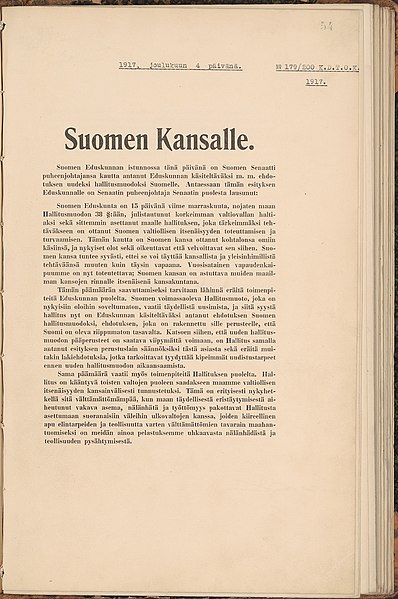Swedish we are not, Russian we do not want to be, so let us be Finns.
--Adolf Ivar Arwidsson, early 1800's
 |
| Adolf Ivar Arwidsson - a happy Finn (thanks, Wikipedia!) |
First, the most important thing to understand is that the "Finns" are a people whose roots go back a long time. References to a "Fenni" people in Scandinavia date back to Tacitus' Germania (~100 AD), but their arrival to the area before that is still rather unknown. However, based on their distinct genetics (a good quick read on Wikipedia), and language (Finnish belongs to the "Finno-Ugric" language group, making it more distant from English than even Russian or Sanskrit; again Wikipedia is a good starting place).
By the early 1300s, the mighty Swedes (don't tell any Finns I said that, even though it was true back then!) had already been in Finland long enough to build some little towns/cities in the southwestern part. One such city - Turku, where I am currently - was even important enough to get a Cathedral and later became the capital of the Finnish region of Sweden. The Swedes were interested in the same things many countries needed back in those days that happened to be abundant in Finnish forests -- wood, tar (meaning the resinous tree product used to seal wood ships against rot, not the petroleum pavement that goes by that name in the US), and fur. The Finnish-Swedish relationship was interesting because the Finns were pretty much just happy that they could trade their goods through the Swedish networks. The Swedish ruling class even allowed the Finns to keep their language and didn't enslave them into serfdom. On the other hand, there were some pretty sucky taxes, espeically during this next part...
Then some people living in what is today Russia (I will call them Russians, even though they are clearly separate from the country that only began to exist fairly recently) figured out that those Finnish forests with all the wood, tar, and furs (technically, I guess the forest animals had those) were pretty enticing. So, they decided to invade. The Swedes really did not like that, but the Finns did not mind because they could still trade with the Russians. The fighting itself was, as it tends to be pretty bad for everyone though, and there were lots of kidnappings, famines, and other nasty things.
There was also trade through the Germanic Hanseatic League, which would probably be considered a positive thing, especially when compared to the war. This connection was really interesting because now in Finland (now meaning back then in the Medieval times) the educated ruling class spoke Swedish, the merchants spoke German, the locals spoke Finnish, and anyone attempting to interact with more than one group (e.g., the clergy) had to learn more than one language. This set the structure for the modern, trilingual Finland, except that English has now replaced German after the end of WWII and Swedish and Finnish have kind of switched roles. The other thing to keep in mind is that the Finns back then would have said "Minä olen ruotsilainen" ("I am Swedish," in Finnish), and had few desires to form their own country.
I will skip all the intervening interesting stuff and skip right to 1809, when Napoleon told Russia that they had to invade Sweden to make them stop blockading him. So Russia just went into the nearest part (Finland) and Sweden did not have enough troops there, so they just retreated back to Sweden. Still, Finland did not really care who "ruled" them because Russia let them be an autonomous duchy, with their own parliament, money, and even army. There were a couple people who wanted an independent Finland and they were called "Fennomans." One of them was our happy friend Adolf Ivar Arwidsson from earlier. These folks were rather interesting because they were Swedish-speaking Finns who supported the idea of a Finnih-language state. These Fennomans began crafting a Finnish identity to help their movement get off the ground, and made the Kalevala, a collection of local myths meant to unify the Finnish people, just as the Grimm Tales had for Germany. The original Kalevala was first published in the premier Fennoman journal of the time, which of course was in Swedish.
The Finns did not really become upset with being under Russian rule until they were not allowed to be autonomous any more. After a whole bunch of insufferable things for Finns around 1900, including making Russian the language of administration and a big conscription law, they decided to separate from Russia on December 6, 1917. Russia, then under Lenin, decided to let them go, apparently because they thought there would be a worker rebellion that would turn Finland into a Communist country that would then rejoin Russia. Nope.
 |
| Finnish Declaration of Independence/Suomen itsenäisyysjulistus (again, thanks Wikipedia!) |
No comments:
Post a Comment